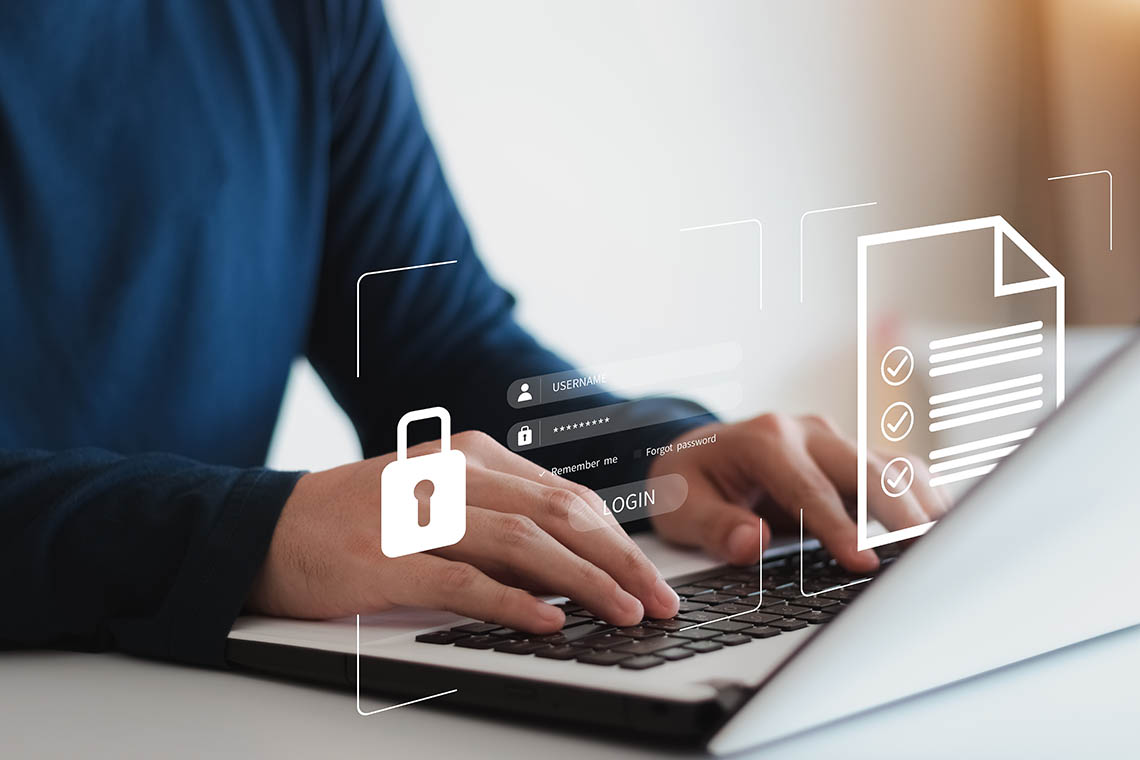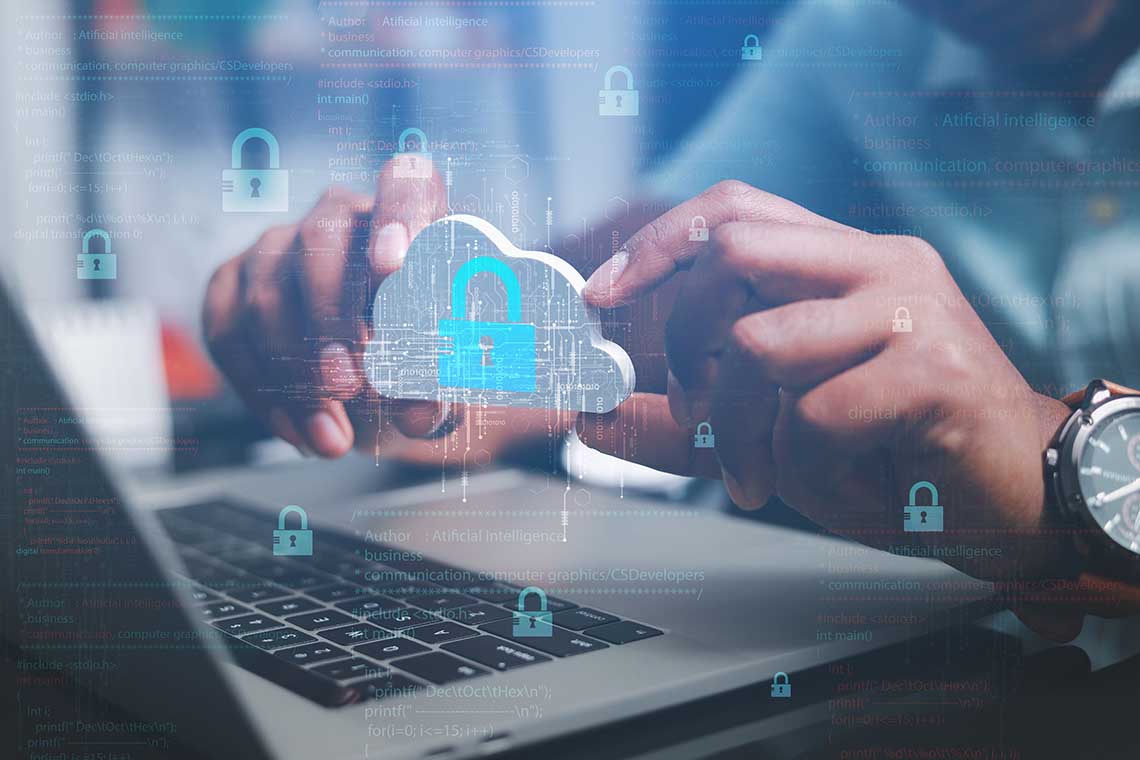From supply chain attacks to ransomware, phishing attacks, and more, enterprise-level organizations face a host of cybersecurity challenges.
Since 50% of all cyberattacks target small to medium-sized enterprises, it’s crucial for growing businesses to take preventative steps to avert the theft or tampering of sensitive company information.
Organizational files often contain valuable data that, if compromised, could have a negative impact on a company’s financial status and public reputation. Despite the risk, most businesses only implement security provisions at the database, network, or endpoint level.
Without file-level security, a malicious actor will have access to every piece of data stored in a breached database, network, or device. Once an employee sends a file by email, shares links online, or places files in an unsecured cloud environment, they will have potentially exposed sensitive information to cybercriminals.
File security protects the important business-related information that organizational files and folders contain. It is a subset of data security that adds an additional layer of protection to your organization’s data inventory.
According to IBM, the average cost of a data breach was $4.24 million in 2021, which was the highest average on record to date. It’s crucial for enterprises to maintain a comprehensive file security plan to safeguard business-critical information.
Without a proper file security plan in place, organizations will face a number of data security challenges including phishing attacks, unauthorized access of company data, data interception due to outdated security functionalities, and even data breaches due to the physical theft of hardware devices.
Enterprises can easily avoid these challenges by following data security best practices, including implementing strict access controls, securing network endpoints, adequately educating your team on file security protocols, and encrypting physical hardware, software backups, and network files.
In this article, we will explore file security best practices, the consequences of poor file security for organizations, and how to leverage WinZip® Enterprise to protect your organizational data.
File Security Best Practices for Organizations
A robust file security management plan ensures your business data stays secure. This comprehensive strategy should address several processes to ensure the integrity, availability, and confidentiality of data files.
Implement the following best practices to ensure that your company data is protected in the event of a security breach:
Manage Access and Permissions
Access control systems enable IT teams to customize access privileges for sensitive data and other company resources. When implementing access controls, it’s important to leverage permission-based user roles to reduce the opportunity for unauthorized access.
These permission-based user roles follow the principle of least privilege (POLP), which limits user access rights to only what is necessary to complete their job duties. Access controls should be audited regularly to ensure that POLP still applies, and that no user has access above what they need for their role.
These audit logs can also be used to identify unusual behavior or unsafe practices that could lead to file compromise. By limiting who has access to what, you reduce the attack surface for unauthorized access.
Protect Your Network Endpoints
Endpoint security is concerned with the protection of company networks and all the devices that are connected to it.
Network endpoints are remote computing devices that virtually connect to a corporate network. Network endpoints commonly used in the workplace include:
- Laptops
- Desktops
- Mobile devices and tablets
- Wearable technology
- Workstations
- Servers
- Other access points
Network endpoints are growing in popularity as more businesses embrace remote and hybrid work environments. However, these devices can be the source of data loss if they are lost, stolen, or otherwise compromised.
Without adequate security controls, endpoint devices can serve as entry points for cybercriminals to infiltrate the corporate network. For example, malicious actors can leverage an unsecured Wi-Fi connection to intercept files stored or shared to endpoint devices.
You cannot protect what you don’t know you have. All of your company’s network endpoints should be identified and monitored closely by your organization’s network security team. Endpoint devices can be secured using solutions such as firewalls, access controls, antivirus software, and data encryption.
Raise Awareness of Security Protocols
The risk of human error is increased when an organization does not properly inform its personnel of company security protocols. After all, how are employees supposed to ensure they follow security protocols if they don’t know what they entail?
Be sure to encourage your team to follow these basic security protocols when dealing with sensitive company information:
Identify and report suspicious network activity, such as emails or texts, from unknown sources to avoid phishing attacks.
Install software updates as soon as they become available to mitigate the risk of cyberattacks.
Avoid reusing passwords and update passwords on a regular basis.
Secure Removable Storage Media and Backups
Removable storage media such as thumb drives, memory sticks, and other portable storage devices can be easily lost or stolen. If these devices fall into the hands of unauthorized users, it can result in a company data breach.
Storage devices are also key sources of malware; a single infected device could compromise the company’s entire network system and files. By encrypting the data that resides on your removable storage media, organizations can avoid the loss of important business-related data.
Backup files should also be encrypted, as they make it possible to restore data that has been compromised, lost, or stolen. Backup data encryption adds an extra layer of security to crucial company data, ensuring that authorized users can access the information they need when they need it.
Secure Removable Storage Media and Backups
Removable storage media such as thumb drives, memory sticks, and other portable storage devices can be easily lost or stolen. If these devices fall into the hands of unauthorized users, it can result in a company data breach.
Storage devices are also key sources of malware; a single infected device could compromise the company’s entire network system and files. By encrypting the data that resides on your removable storage media, organizations can avoid the loss of important business-related data.
Backup files should also be encrypted, as they make it possible to restore data that has been compromised, lost, or stolen. Backup data encryption adds an extra layer of security to crucial company data, ensuring that authorized users can access the information they need when they need it.
Implement File-Level Encryption
During the second quarter of 2022, internet users around the world saw about 52 million data breaches. Sharing files online or over the cloud is a common practice in today’s business world. However, this advancement in file sharing practices brings an all too familiar set of security challenges. Unsecure file sharing practices could leave an organization’s computer network vulnerable to malware infections that may result in the loss or exposure of sensitive information. leave an organization’s computer network vulnerable to malware infections that may result in the loss or exposure of sensitive information.
To ensure secure file sharing, enterprises should practice file encryption. File encryption makes it so that only authorized users can access their company data. The information contained within the file is useless and unreadable to cybercriminals because it is inaccessible without the decryption key.
Encrypting at the file level gives businesses increased visibility and control over their data. This reduces the risk of both insider and third-party threats while helping you remain compliant with relevant regulatory requirements.
Examples of relevant data security regulations include the Gramm-Leach-Bliley-Act (GLBA) that requires financial institutions to encrypt both data at rest and in transit on external networks or the Health Insurance Portability and Accountability Act (HIPAA) that requires healthcare institutions to adhere to the privacy, security, and breach notification rules that seek to protect sensitive patient data.
Consequences of Poor File Security
It’s crucial for enterprises to implement file security measures that meet all applicable data protection regulations to keep their business data secure. When the security of company files is not appropriately managed, the following consequences may occur:
Operational Downtime
During a cybersecurity incident, companies often experience operational downtime. When files are lost or compromised, you cannot resume normal operational processes until the data is recovered. Following a cybersecurity event, around 30% of businesses temporarily or permanently suspend operations.
In larger enterprises, a single hour of downtime can cost around $700,000. This means that downtime can impact your profitability even more than the cybersecurity event itself. For example, downtime after suffering a ransomware attack can be 50 times greater in cost than the ransom demand.
Loss of Critical Data
Ransomware attacks are one of the most common threats to the security of enterprise computer systems today. During these attacks, cybercriminals deploy ransomware, which is a type of malware that encrypts files, rendering them unusable.
In exchange for decrypting the compromised files, malicious cybercriminals will often demand that the business pay a steep ransom. However, even if your organization does pay this fee, there is no guarantee that you will be able to regain access to your compromised files.
To make matters worse, the majority of companies that pay the ransom are attacked again. In fact, only 42% of companies were able to restore their data systems after the initial payment and 80% of companies that paid ransoms to cyberattackers were hit a second time. Subsequent attacks also tend to increase the amount of ransom demanded, and you’re still at risk of having company data sold on the dark web or compromised by the cybercriminal’s faulty decryption tools.
Human Error
Data breaches caused by human error prove detrimental to a company’s bottom line. According to Uptime’s 2022 annual Outage Analysis report, nearly 40% of organizations have suffered a major service outage caused by human error over the past three years.
Examples of security risks caused by human error include working on unsecured Wi-Fi networks, sharing unencrypted files, and using weak passwords, among others. Operating outside of the organization’s defined security standards is typically the result of employees not understanding the risks inherent in handling sensitive data.
By monitoring and controlling who has access to what data, you are better able to detect and mitigate vulnerabilities caused by human error. This reduces the possibility of shadow IT, which occurs when people use unknown, unauthorized solutions for work purposes.
Reputational Damage
In 2021, 212.4 million users were affected by company data breaches. When a company’s sensitive information is breached by malicious actors, 83% of customers will refuse to continue using its products or services.
The reputational damage caused by a data breach can impact company performance for years to come. For example, following a breach, organizations tend to underperform by 15% on the stock market for up to three years.
Data breaches diminish customer trust and tend to push customers toward competitor services. In addition to lost revenue from operational downtime, reputational losses and customer turnover can cost businesses around $1.59 million for the average $4.24 million security breach. By putting in place and maintaining industry-standard file security measures, enterprises can ensure that their company’s reputation remains intact.
How WinZip Enterprise Enhances File Security
Most enterprise-level organizations are tasked with managing the security of robust catalogs of files spread across various company computer systems. Leverage WinZip Enterprise to help protect your critical business data from unauthorized access and avoid the consequences of poor file security.
WinZip Enterprise is a customizable set of enterprise-grade tools that can help your company set and enforce security policies across your entire organization. This includes secure backup, file transfer, and encryption features, among others.
WinZip Enterprise is also compatible with a wide-range of enterprise-grade cloud file sharing and file storage platforms such as Google Cloud and Office 365 Business. By syncing WinZip Enterprise with these programs, your organization can ensure that your company data is encrypted securely.
WinZip Enterprise emphasizes file-level encryption at all data stages, using the Advanced Encryption Standard (AES) format, commonly used by government agencies to protect classified and sensitive data. AES encryption is FIPS 140-2 compliant, making it an optimal solution for industries that must abide by strict data security regulations., making it an optimal solution for industries that must abide by strict data security regulations.





